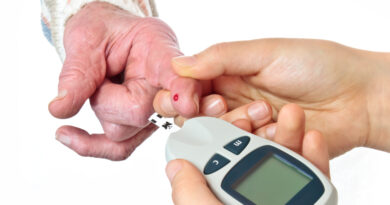The Connection Between Psoas Muscle Imbalances and Chronic Back Pain
Introduction:
Chronic back pain can have a significant impact on one’s quality of life, and while there are various causes for this condition, imbalances in the psoas muscle are often overlooked. The psoas muscle, a deep-seated muscle connecting the spine to the legs, plays a crucial role in maintaining proper posture and supporting the lower back. In this article, we will explore the potential connection between psoas muscle imbalances and chronic back pain. We will examine the causes, symptoms, and their implications for finding relief.
Causes of Psoas Muscle Imbalances:
1. Prolonged Sitting: Our modern sedentary lifestyle, characterized by long hours spent sitting, can lead to tightness and imbalances in the psoas muscle. The prolonged sitting position causes the psoas muscle to remain in a shortened state, resulting in stiffness and weakness over time.
2. Lack of Exercise: Insufficient physical activity, particularly exercises that target the core and hip flexors, can contribute to psoas muscle imbalances. When these muscles are not adequately engaged and strengthened, it can result in improper alignment and strain on the lower back.
3. Stress and Emotional Tension: The psoas muscle is closely linked to our emotional well-being. Increased stress and emotional tension can cause the psoas muscle to tighten, leading to imbalances and potential back pain. Addressing underlying emotional stress can be an essential aspect of relieving psoas-related back pain.

Symptoms of Psoas Muscle Imbalances:
1. Low Back and Knee Pain:
Tightness in the psoas muscle can contribute to low back and knee pain. The tightness and shortening of the psoas muscle can alter the alignment and mechanics of the lumbar spine and pelvis, resulting in increased stress and strain on the lower back. Additionally, the psoas muscle shares attachments with the thigh bone (femur) and connects to the knee joint. Tightness in the psoas can create tension and imbalance in the surrounding musculature, potentially contributing to knee pain.
2. Leg Length Discrepancy:
Tightness in the psoas muscle can create a perceived leg length discrepancy. The psoas muscle attaches to the front of the thigh bone and runs through the pelvis. When it becomes tight, it can pull on the pelvis, causing a forward tilt. This tilt can make one leg appear shorter than the other, even though the actual bone length remains the same. This perceived leg length discrepancy can affect posture and gait, potentially leading to compensatory movements and imbalances throughout the body.
3. Constipation:
The psoas muscle’s proximity to the intestines and its connections to the lumbar spine make it potentially influential in digestive function. When the psoas muscle is tight, it can compress and restrict movement in the abdominal area. This compression can affect the normal peristaltic movement of the intestines, potentially leading to constipation or digestive discomfort.
4. Posture:
The psoas muscle plays a crucial role in maintaining proper posture. When the psoas is tight, it can contribute to postural imbalances. Tightness in the psoas can pull the pelvis forward, causing an anterior pelvic tilt. This tilt can result in an exaggerated curvature of the lower back (increased lumbar lordosis) and a forward-leaning posture. These postural deviations can lead to additional strain on the spine, muscles, and joints, potentially resulting in pain and discomfort.
5. Menstrual Cramps:
While the exact relationship between the psoas muscle and menstrual cramps is not fully understood, some theories suggest that tension in the psoas muscle may contribute to increased discomfort during menstruation. The psoas muscle’s connections to the lower spine and pelvis, as well as its proximity to the uterus and other reproductive organs, could potentially influence the pelvic region. Tightness in the psoas may contribute to increased pelvic tension and pain during menstruation.
6. Fatigue:
Tightness in the psoas muscle can contribute to feelings of fatigue and reduced energy levels. When the psoas is chronically tight, it can create a sense of ongoing muscular tension and stiffness. This sustained tension can cause fatigue and exhaustion, as the body is constantly working to compensate and maintain balance.
7. Breathing:
The psoas muscle’s connections to the diaphragm, the primary muscle involved in breathing, can influence breathing patterns. When the psoas muscle is tight, it can restrict the movement of the diaphragm, potentially leading to shallow or inefficient breathing. This can result in reduced oxygen intake, increased respiratory effort, and altered breathing mechanics.
Techniques for Relaxing the Psoas Muscle and Reducing Pain:
To alleviate psoas muscle pain and restore flexibility, a combination of stretching, strengthening, massage/manual therapy techniques, and self-treatment options can be beneficial. Consider the following approaches:
1. Psoas Muscle Stretches: Perform targeted stretches to elongate the psoas muscle, such as the kneeling lunge or supine psoas stretch, to release tension and improve flexibility.
2. Core Strengthening Exercises: Engage in exercises that strengthen the core muscles, including the psoas, such as planks or leg raises, to promote stability and support proper alignment.
3. Mind-Body Techniques: Incorporate relaxation practices like deep breathing, meditation, or yoga to reduce stress and tension in the psoas muscle, promoting relaxation and pain relief.
4. Posture Awareness: Maintain good posture throughout the day, especially during sitting and standing, to prevent excessive strain on the psoas muscle. Consider ergonomic adjustments in the work environment as well.
5. Massage/Manual Therapy Techniques: A qualified healthcare professional, such as a licensed massage therapist or physical therapist, can provide targeted massage or manual therapy techniques to release tension in the psoas muscle.
6. Self-Treatment Options: For self-treatment, consider trigger point therapy. By applying pressure to specific trigger points in the psoas muscle, using specific tools you can help release tension and reduce pain on your own. Please consult with a healthcare professional or a knowledgeable therapist to ensure proper technique and safety.
Click here for a self help tool that can specifically help you to release the psoas and other hip flexors that contribute to chronic back pain.
Conclusion:
Understanding the potential relationship between psoas muscle imbalances and chronic back pain is crucial for effective management and treatment. If you are experiencing chronic back pain, it is recommended to consult with a healthcare professional who can guide you with a specific treatment plan tailored to your needs.




